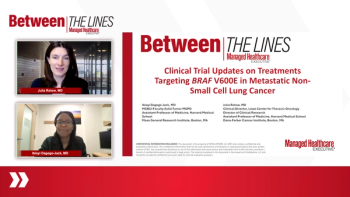
Identifying Drivers of Economic Burden Associated With Dry Eye Disease
Dr Periman addresses cost-related concerns associated with treating dry eye disease.
Episodes in this series

Laura M Periman, MD: How do we use these standardized questionnaires? We use them in clinical research studies and in clinical practice as a way of measuring someone’s progress with therapy. Here’s the thing: human beings forget pain by design. Otherwise, you’d never give birth more than once. We forget how bad we used to feel. That’s the benefit of standardized questionnaire scores. But to act on that within clinical practice, I also use objective measures, such as tear film osmolarity, InflammaDry, or MMP-9 [matrix metalloproteinase 9]. How high is that inflammation load in the tears? If it’s still really high, I have to keep going to get that down, because inflammation is driving the whole picture. Inflammation is the central core, and then it’s a matter of identifying the main driver of that source of inflammation.
The question around the individual economic burden of dry eye disease is a microcosm of the societal economic impact, but we’ll start with the patient. Over-the-counter treatments aren’t cheap, and the patient may not be selecting the right thing anyway, so their therapeutic potential is limited. Exceptions to that are the new over-the-counter topical antihistamine drops, specifically Pataday and Lastacaft. However, there are patients who run into tolerability limits with those and need prescription topical antihistamines, such as Bepreve and Zerviate. Keep in mind that all the over-the-counter treatments don’t take care of that whole category. It turns out that allergic conjunctivitis is an important driver of dry eye disease that must be treated and controlled, but not orally, as that makes dry eye worse in a heartbeat. That’s the wrong thing to do for an allergic conjunctivitis situation in a patient with dry eye.
The monthly expenditure for a patient with moderate dry eye with things like over-the-counter palliatives, eye drops, eye ointments, antiallergy drops, and nasal sprays, is around $50 to $80. That doesn’t include the co-payments for their prescription medications that they also need at that point. If you’re spending that much on over-the-counter palliatives, you’re also on prescription medications, with all the co-payments associated with that. That isn’t even bringing into consideration the in-office therapeutics that we have to offer, which are typically noncovered services, unfortunately. Those are direct pay, and the cost expenditure can be in the thousands per year. The annual expenditure—I did the math one day—depending on the severity of disease, can run into the tens of thousands of dollars. If you aren’t a wealthy person, that’s a severe economic strain for the family unit and family system.
To zoom out and look at the societal perspective, there’s an old study from 2010—so this isn’t super reliable—that did calculations on the pharmaceutical and societal expenditures of dry eye. It was $3.84 billion spent in direct costs and $55 billion spent on indirect costs. That includes things like reduced workplace productivity. We’re talking about something that’s large but not unconquerable. We’re making all these innovations that become much more targeted and specific. It takes a lot of the guesswork out, so that the things we diagnose and prescribe are targeted, specific, effective, and have the potential to limit progression to that later-stage disease with polypharmacy, multiple prescriptions, and more severe impacts on quality of life. The news is good. There’s a lot we can still learn around the economic impacts and how we can all work together in the health care system to prevent progression and severe situations.
Transcript edited for clarity.
Newsletter
Get the latest industry news, event updates, and more from Managed healthcare Executive.


